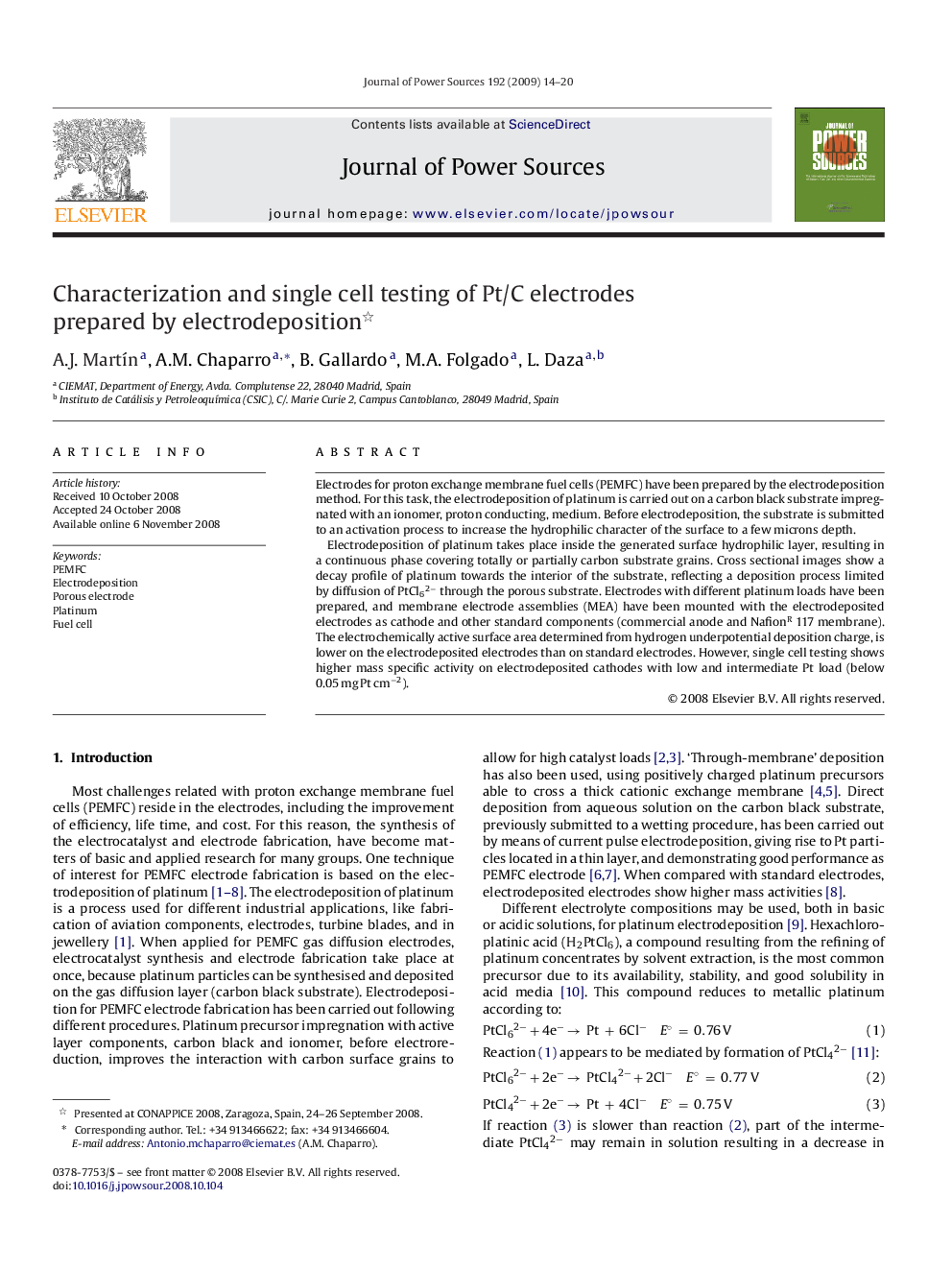| Article ID | Journal | Published Year | Pages | File Type |
|---|---|---|---|---|
| 1294191 | Journal of Power Sources | 2009 | 7 Pages |
Electrodes for proton exchange membrane fuel cells (PEMFC) have been prepared by the electrodeposition method. For this task, the electrodeposition of platinum is carried out on a carbon black substrate impregnated with an ionomer, proton conducting, medium. Before electrodeposition, the substrate is submitted to an activation process to increase the hydrophilic character of the surface to a few microns depth.Electrodeposition of platinum takes place inside the generated surface hydrophilic layer, resulting in a continuous phase covering totally or partially carbon substrate grains. Cross sectional images show a decay profile of platinum towards the interior of the substrate, reflecting a deposition process limited by diffusion of PtCl62− through the porous substrate. Electrodes with different platinum loads have been prepared, and membrane electrode assemblies (MEA) have been mounted with the electrodeposited electrodes as cathode and other standard components (commercial anode and NafionR 117 membrane). The electrochemically active surface area determined from hydrogen underpotential deposition charge, is lower on the electrodeposited electrodes than on standard electrodes. However, single cell testing shows higher mass specific activity on electrodeposited cathodes with low and intermediate Pt load (below 0.05 mg Pt cm−2).
